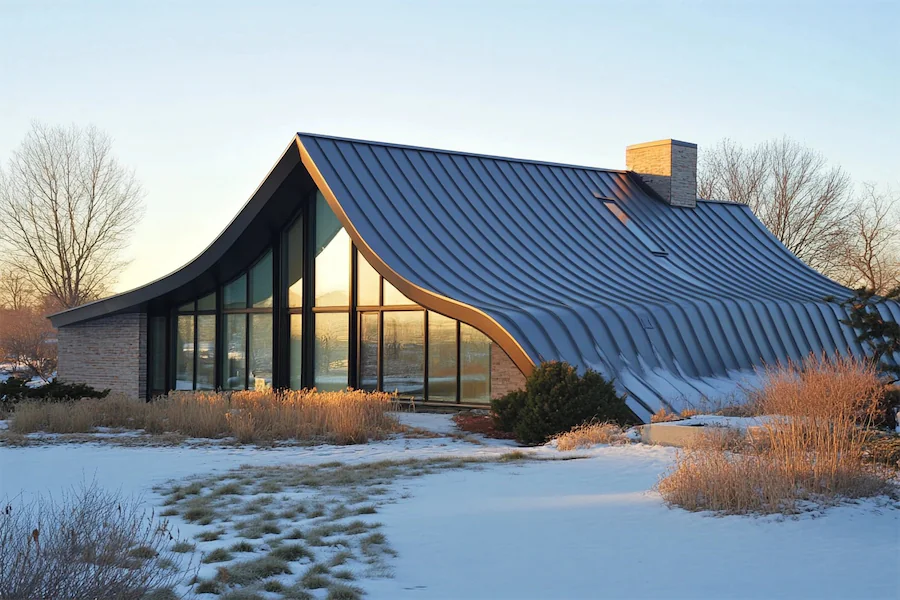A metal roof is a roofing system made from metal pieces or tiles, known for their durability, longevity, and energy efficiency. Common metals used include steel, aluminum, copper, and zinc.
History and Origins of Metal Roofs
Metal roofing has been utilized for centuries, with copper roofs dating back to ancient architecture due to their longevity and resistance to corrosion. In the 19th and 20th centuries, metal roofing gained popularity in industrial and agricultural buildings for its durability and low maintenance. Today, advancements in materials and coatings have made metal roofing a viable option for residential applications, offering a variety of styles and finishes.
Key Features of Metal Roofs
- Durability and Longevity: Metal roofs can last 40–70 years, depending on the material, significantly outlasting traditional asphalt shingles. They can withstand extreme weather conditions, including heavy snow, hail, and high winds.
- Energy Efficiency: Metal roofs reflect solar radiant heat, which can reduce cooling costs by 10–25%. Some metal roofs are coated with special reflective pigments to minimize heat gain.
- Environmental Impact: Often made from recycled materials, metal roofs are 100% recyclable at the end of their lifespan, reducing landfill waste compared to traditional roofing materials.
- Variety of Styles and Materials: Metal roofing comes in various styles, including standing seam, corrugated panels, and metal shingles, allowing homeowners to choose designs that complement their architectural preferences.
Applications of Metal Roofs
Metal roofs are suitable for various building types, including residential homes, commercial structures, and industrial facilities. Their adaptability to different architectural styles and slopes makes them a versatile roofing option. Additionally, metal roofs can be installed over existing roofing materials, reducing installation time and costs.
Considerations When Choosing Metal Roofs
- Initial Cost: The upfront cost of metal roofing is higher than traditional asphalt shingles. However, the extended lifespan and energy savings can offset the initial investment over time.
- Noise: Without proper insulation, metal roofs can be noisier during rain or hailstorms compared to other roofing materials. Adequate insulation can mitigate this issue.
- Expansion and Contraction: Metal expands and contracts with temperature changes, which can affect fasteners and panels over time. Choosing appropriate designs and materials can accommodate these movements.
- Maintenance: While metal roofs require less maintenance than other materials, it’s essential to inspect for loose fasteners, damaged panels, or corrosion, especially in coastal areas.
Conclusion
Metal roofs offer a durable, energy-efficient, and environmentally friendly roofing solution suitable for various building types. While the initial investment is higher, the long-term benefits, including reduced energy costs and extended lifespan, make metal roofing a compelling choice for homeowners and builders seeking a sustainable and resilient roofing option.
